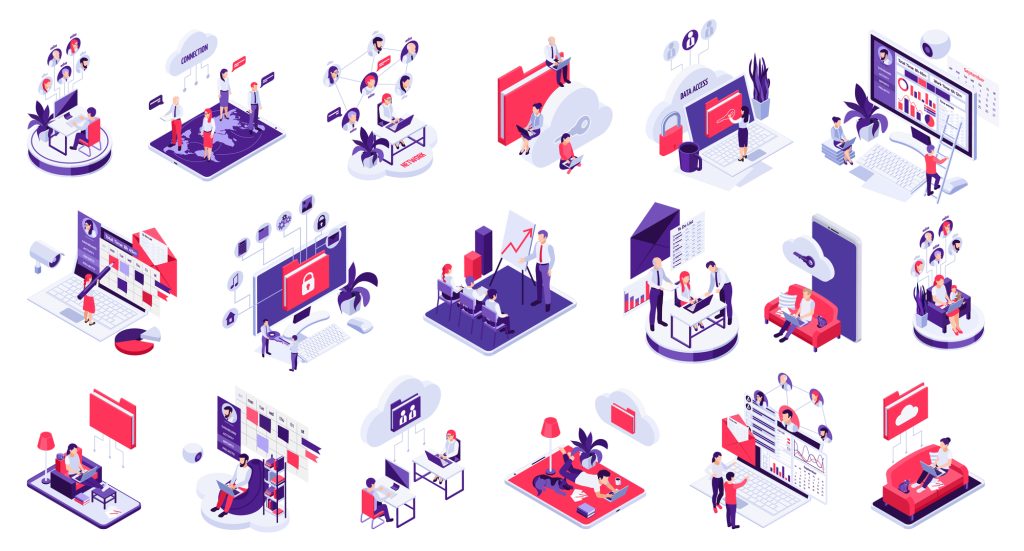- July 12, 2023
- Catagory productivity
Employees want to work from anywhere, but need the right remote tools
The right tool for the right job matters in a hybrid workplace – not only do those returning to the office expect to have the right applications to be productive, but they want the right remote tools when working from home.
In fact, a new study by Atlassian found that employees want remote work tools rather than in-office mandates, and half those who employees who work remotely rather than the office say they don’t have the remote tools they need. The study also found that in-office mandates are unpopular with employees.

These finding are based on survey responses from 1,000 knowledge workers in the United States and Australia. More than two thirds work remotely at least once per week, but only just over half of those remote workers said their employer provides them with remote tools for collaboration. Of those who are provided with remote tools, 26 per cent said those tools aren’t necessarily right for their job or they can’t be effective with those collaboration applications because they don’t have sufficient training.
The Atlassian report noted that the lack of productivity reported by employers is not the fault of remote work – as employers claim – but that they aren’t providing the right remote tools to make offsite, distributed employees as productive as they can be.
Atlassian also noted that the companies that have issued back-to-office mandates have generally not provided hard data that demonstrates employee productivity has declined, and that there is research to show that workers feel more productive when working from home.
But there is conflict between companies and their employees over in-office mandates along with fears of operation silos and a feeling from employees that they are not being supported. This conflict isn’t going to be resolved by forcing people to go back to the office, given that in-office mandates aren’t popular, according to Atlassian. Its survey found that 92 per cent of respondents said they have some form of “in-office mandate,” while 46 per cent are going into the office because their company mandates it, not because they want to.
The survey also found that even in those companies where employees are given a choice, a quarter of respondents feel pressure to go into the office, while 10 per cent worry that they will be perceived as less productive or not adequately committed to their work if they opt to work remotely.
Meanwhile, S&P Global’s 2022 Voice of the Enterprise: Workforce Productivity and Collaboration survey echoes the Atlassian findings and that most employees would prefer to work at home some of the time and that productivity hinges on having the right remote tools.
The consensus appears to be that there’s no going back to the pre-pandemic days of everyone being in the office five days a week. Now matter where employees work, they need the right tools, and ultimately the focus should be on productivity, not hours spent in the office.
A managed service provider is ideally equipped to help you optimize your distributed workforce so you can deploy the right remote tools while maintaining a strong security posture.
The move to remote work was a stark reminder of how legacy IT infrastructure can thwart agility and responsiveness. With hybrid workplaces expected to be the new normal, these issues must be dealt with.
These legacy IT infrastructures can comprise software and systems architectures that have been in place for years or possibly decades. Not only do they make it more difficult to securely support hybrid workplaces, but they can also be a barrier to customer-centric commerce and an organization’s digital transformation efforts.

However, legacy IT infrastructure can be upgraded so you can evolve your platforms to effectively support hybrid workplaces and future proof the organization to meet the challenges of your industry and bolster your security posture.
Legacy IT adds risk to hybrid workplaces
Legacy IT infrastructure is more common in some industries than others, and their impact on the ability to be nimble and flexible in delivering products, services, and support employees at the office and at home can vary widely.
One example that illustrates this digital divide is in the financial services sector, where young fintech companies can challenge large incumbent financial institution. They’re embracing a customer-centric, iterative approach to software development and adopting cloud computing and Software-as-a-Service (SaaS) offerings to meet the needs of business users. Regardless of industry, companies embracing these technologies successfully made the sudden shift to remote work at the start of the pandemic and are in a better position to support hybrid workplaces because they are not anchored by legacy IT infrastructures.
These companies have also avoided what is called “technical debt,” which research firm IDC defines as “work left to do.” If an organization accumulates too much of this debt because of budget pressures and deferred technology investment, legacy IT infrastructures can become brittle to the point where it has a significant impact on business operations.
Technical debt is often left undiscovered until the organization looks to implement major changes as part of their digital transformation efforts or respond to a sudden shift such as the move to remote work or hybrid workplaces. Not only is it hard to identify, it’s also hard for IT people to explain the liabilities and consequences of technical debt to business leaders. Even worse, the phenomenon of “bimodal IT,” wherein legacy systems are maintained while modern technologies and development approaches are adopted concurrently, makes technical debt worse because you end of up two different streams of IT. You have one that’s nimble and responsive and one that has legacy IT infrastructure that is difficult to manage and secure.
If organizations want to avoid serious consequences and be able to support hybrid workplaces for the long term, they need a plan to migrate away from legacy IT infrastructures completely and avoid bimodal IT.
Start swapping
Legacy IT infrastructures place a heavy burden on security, which is already a serious challenge in the remote work era. Whether your goal is to embrace digital transformations or support hybrid workplaces, you need to leave legacy IT systems behind.
While it may not be possible to fully eliminate legacy IT infrastructures immediately or completely, a managed cloud services provider can help identify low hanging fruit, applications and data that can be lifted and shift to the cloud, and help you build a modern architecture that better secures remote and supports hybrid workplaces.




 Latest Blogs
Latest Blogs FAQ
FAQ